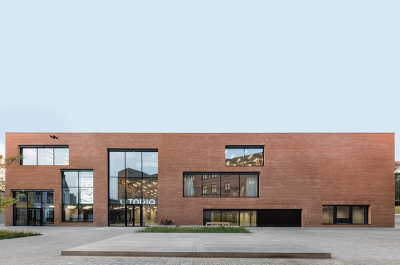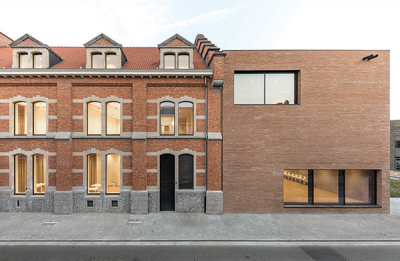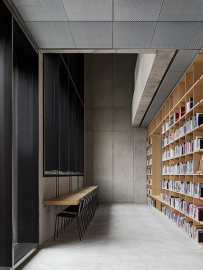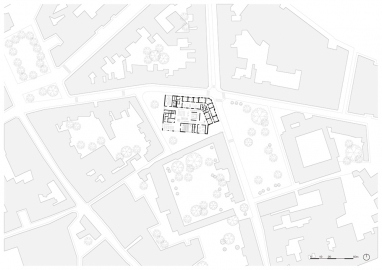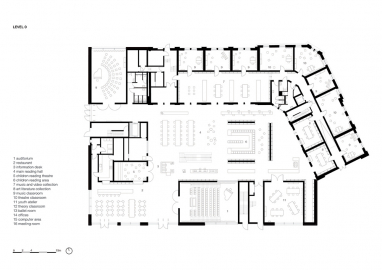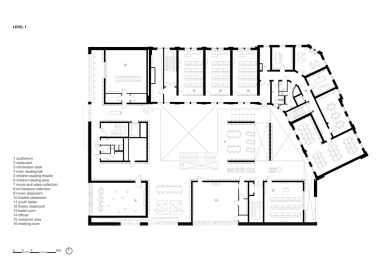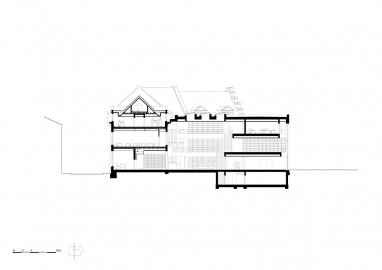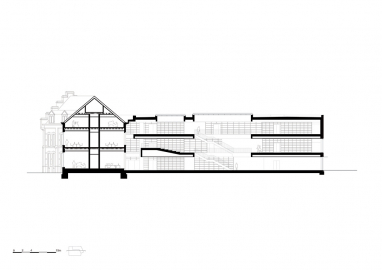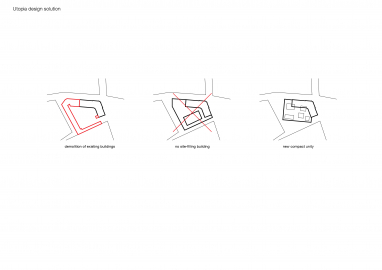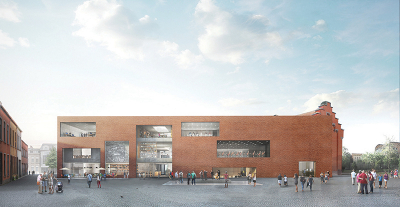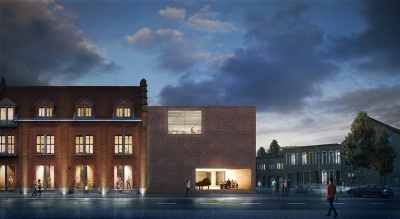Utopia - Library and Academy for Performing Arts
The new cultural landmark of the Flemish city of Aalst incorporates a striking historic building from the second half of the Nineteenth century and rejuvenates the urban landscape while elegantly giving expression to the required functionality.
Utopia Library and Academy for Performing Arts has been slotted into the urban fabric of the city center creating three new squares alongside adjacent streets. The new building integrates into its design the ‘Pupillenschool’ building from 1880: its historic façades blending perfectly with the new structure through a dialogue of materials. At the core of the ensemble the reading hall of the library spreads vertically, while the Academy is housed on the first two floors flanking the reading atrium.
The complex is enriched by the vibrancy of the two seemingly opposite programs it comprises – the library and the academy for performing arts. The windows offer unobstructed views through the building showcasing the bookshelves and the rehearsal spaces for the various performing arts. The complex is not ornamented but is itself an ornament for the city.
Taking its cues from Thomas More’s “Utopia”, first printed by prominent Aalst citizen Dirk Martens, Utopia adheres to the simple brief of being a home for information, knowledge, culture and leisure. As such it is inextricably linked to the city and its residents, which can gaze at each other through large openings carefully sliced out of the brickwork. Within the new building, the ballet room, rehearsal studios and teaching spaces have windows as tall and wide as the rooms themselves, providing a view onto the city and a glimpse inwards from the city, while giving expression to the façade composition.
The entrance to the building is located on an intimate square between the reading café and the auditorium. The open interior landscape of the building unfolds from floor to ceiling where cantilevered thick concrete floors are seemingly supported by books. This effect is enabled by pushing the bookcases up against concrete discs which allow the floors to cantilever out without extra support. Hanging at varying heights, each level features bookshelves and reading tables, while looking into the atrium and towards the brick façade of the pre-existing building.
Acoustics was a fundamental design tool within Utopia: the reading in the Library should not be disrupted by music lessons and play’s rehearsals. Suspended concrete floors replace the original wooden floors, doors are transformed into sound barriers, and double-glazed windows capture each single piano note. Much of the building’s exterior consists of new brickwork. The predominant colours of the Flemish city were studied and the architects chose a dark brick called “Red Aalst”. To accentuate Utopia’s duality, these long flat bricks (50 x 10 x 4 centimeters) have been laid in horizontal format to complement the vertically-oriented old school façades.
Utopia’s openness also exudes sustainability. The building has achieved an BREEAM Excellent rating: materials and labour were locally sourced, low-energy machines were used for construction, solar panels, geothermal heat and LED lighting have been integrated in the design, rainwater is recuperated and buffered, and 230.000 bricks were chipped away and reused elsewhere.

